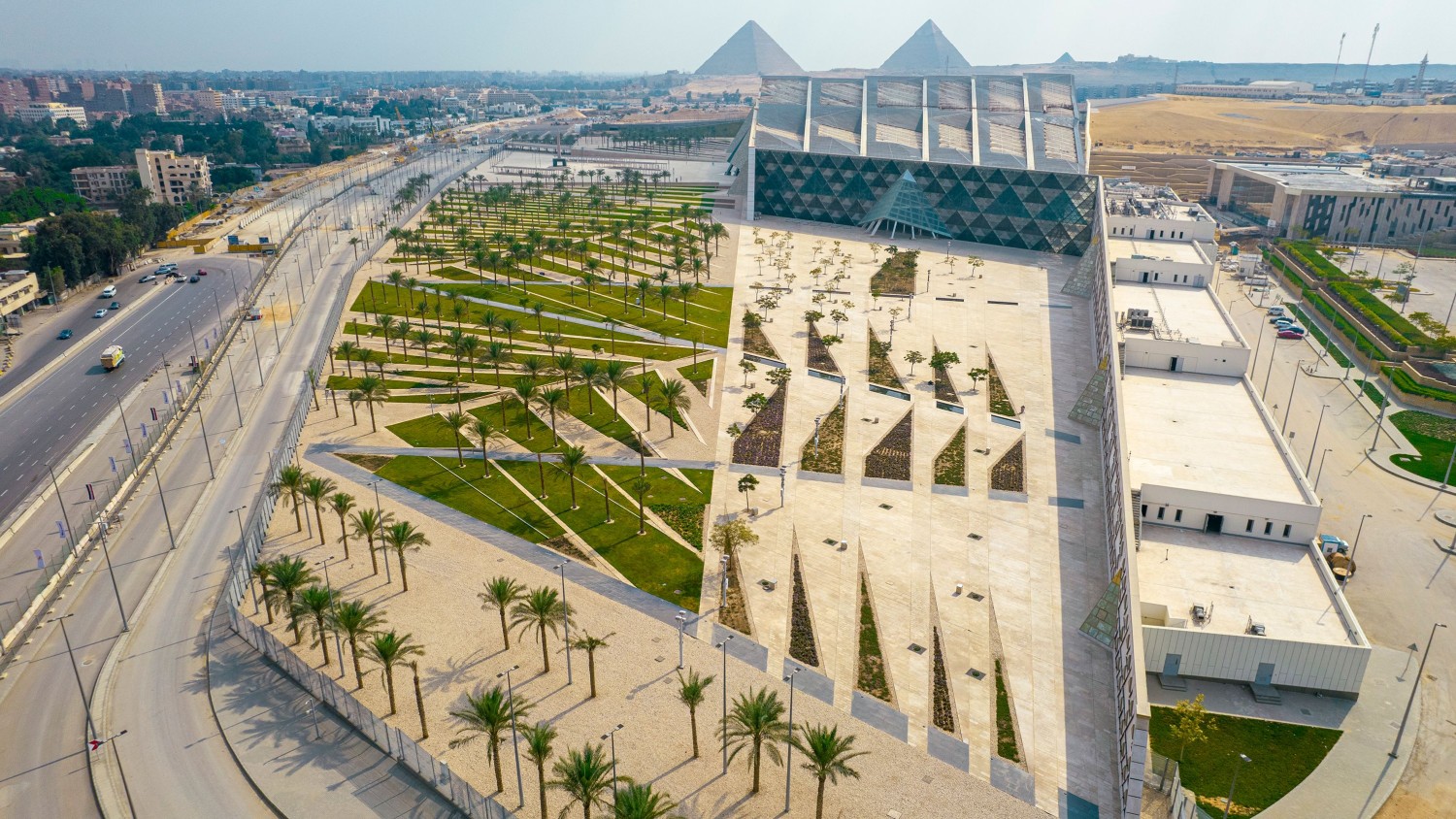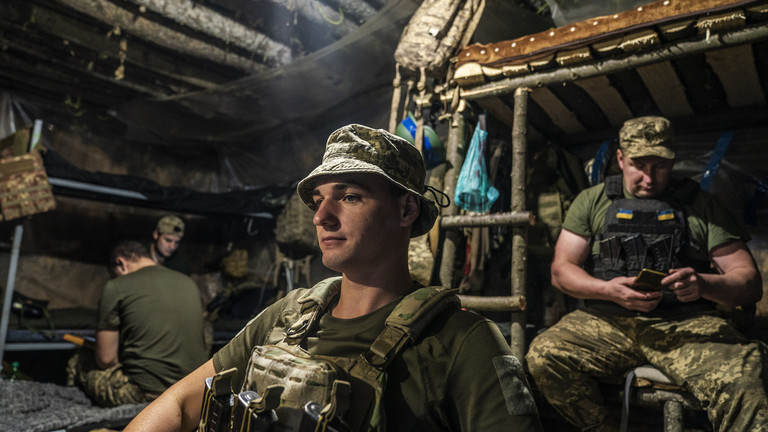
This article is more than
7 year oldGuatemala volcano: Almost 200 missing and 75 dead

Villages on the slopes were buried in volcanic ash and mud.
Rescue work on Tuesday was disrupted when a new eruption sent hot gas and molten rock streaming down the volcano's south side.
More than 1.7 million people have been affected by Sunday's eruption, with more than 3,000 evacuated.
Tuesday's explosion took many by surprise after volcanologists said the eruption, which had sent ash up to 10km (33,000ft) into the sky on Sunday, was over for the near future.
Eddy Sanchez, the head of Guatemala's National Institute of Seismology, had predicted "no imminent eruption over the next few days".
A village wiped off the map
Will Grant, BBC News, El Rodeo, Guatemala
Boris Rodriguez has no-one to turn to now. He lost more loved ones in a single night on Sunday than many do in a lifetime.
Mr Rodriguez's wife, both of her parents, his brother and sister-in-law and their children died when the Fuego volcano erupted.
"I saw the children's bodies," he told me between sobs. "They were huddled together in the bed, like they were trying to hide from what was happening."
If Mr Rodriguez, who is 25, were a solitary case, it would be heartbreaking enough. But most of his neighbours in the village of El Rodeo have similar stories of grief. The village was almost entirely wiped off the map.
Chaos and hope: More on-the-ground accounts

Volunteers and rescuers evacuate the disaster zone during the latest eruption
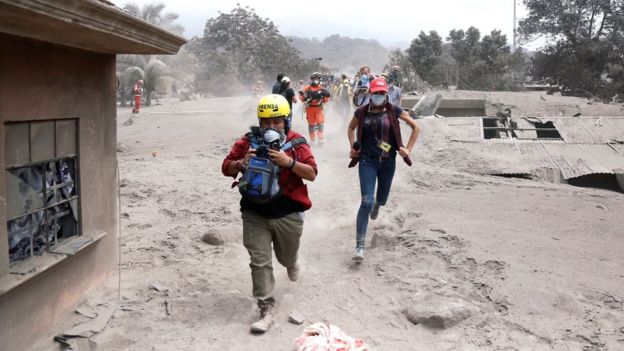
Journalists run during the second blast
Why were so many people killed in the initial eruption?
Almost 200 people remain unaccounted for, said AFP news agency, quoting Guatemala's Disaster Relief Agency.
No evacuation alert was issued before the volcano erupted on Sunday, said the agency's chief, Sergio Cabañas.
- Eruption in pictures
- How many people do volcanoes kill?
- More on Guatemala
- Are you in the area? Please email haveyoursay@bbc.co.uk
He added that local residents had received training in emergency procedures but were not able to implement them because the initial volcanic activity happened too fast.
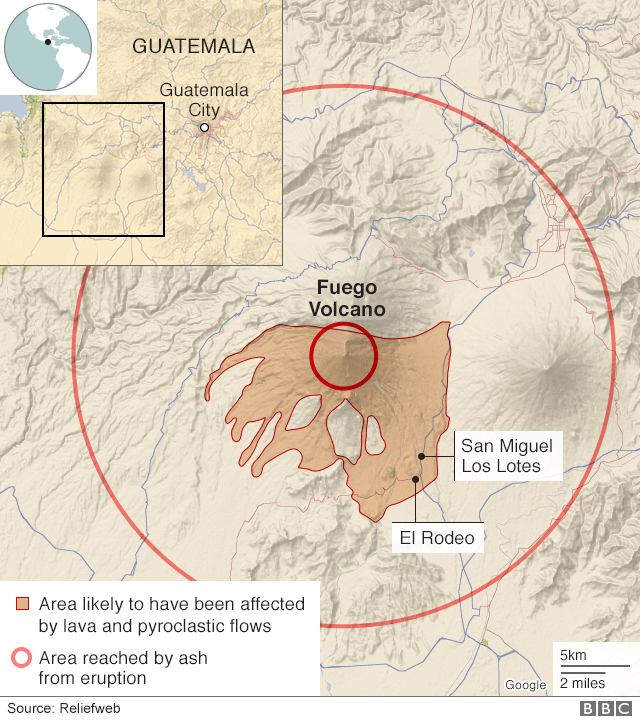
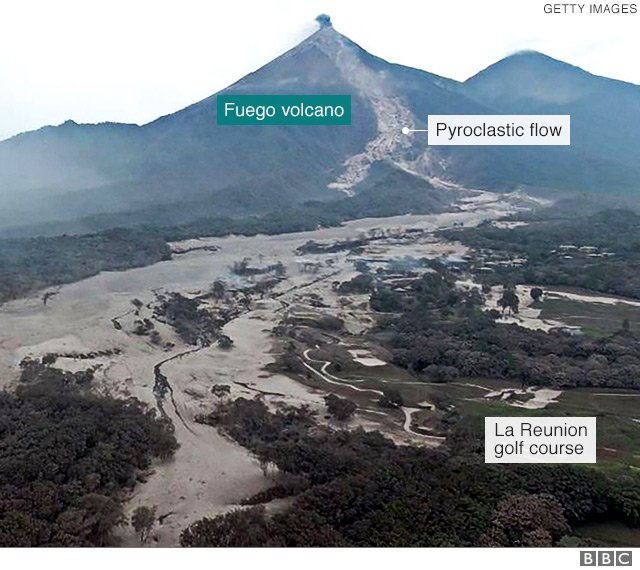
Sunday's blast generated pyroclastic flows - fast-moving mixtures of very hot gas and volcanic matter - which descended down the slopes, engulfing communities including El Rodeo and San Miguel Los Lotes.
Volcanologist Dr Janine Krippner told the BBC that people should not underestimate the risk from pyroclastic flows and volcanic mudflows, known as lahars.
"Fuego is a very active volcano. It has deposited quite a bit of loose volcanic material and it is also in a rain-heavy area, so when heavy rains hit the volcano that is going to be washing the deposits away into these mudflows which carry a lot of debris and rock.
"They are extremely dangerous and deadly as well."

Deadly flow, as fast as a jet plane
By Paul Rincon, science editor, BBC News website
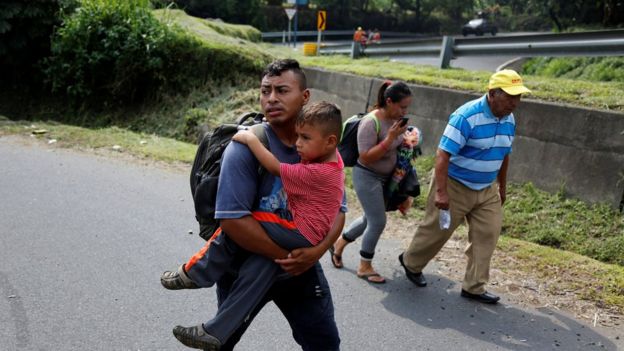
Thousands have left their homes since the eruption
A pyroclastic flow is a fast-moving mixture of gas and volcanic material, such as pumice and ash. Such flows are a common outcome of explosive volcanic eruptions, like the Fuego event, and are extremely dangerous to populations living downrange.
Just why they are so threatening can be seen from some of the eyewitness videos on YouTube of the Guatemalan eruption. In one, people stand on a bridge filming the ominous mass of gas and volcanic debris as it expands from Fuego.
Some bystanders only realise how fast it is travelling as the flow is almost upon them.

The speed it travels depends on several factors, such as the output rate of the volcano and the gradient of its slope. But they have been known to reach speeds of up to 700km/h - close to the cruising speed of a long-distance commercial passenger aircraft.
In addition, the gas and rock within a flow are heated to extreme temperatures, ranging between 200C and 700C. If you're directly in its path, there is little chance of escape.
The eruption of Vesuvius, in Italy, in 79 AD produced a powerful pyroclastic flow, burying the Roman towns of Pompeii and Herculaneum under a thick blanket of ash.
